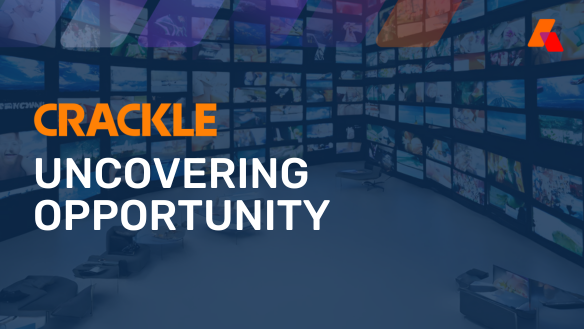The Connected TV Live Sports Bonanza

When ESPN, Fox, and Warner Bros. announced that they’re creating a super app to stream live sports, most of the news media coverage focused on the slate of content (how big would it be?) and the price for access (which we don’t know yet). Naturally, my first question was, “How will the advertising model work?” We’ll soon find out. The announcement is part of a bigger change going on with live sports moving to connected TV. In fact, the explosion of live sports on connected TV is one of the biggest stories in the industry.

The topic of live sports and connected TV comes up in almost every meeting I have with clients and my own team. And no wonder: sports leagues and traditional media companies continue a breathtaking race to capitalize on the rise of connected TV, alongside the “non-traditional” streaming platforms and FAST providers. This shifting landscape creates both opportunities and challenges.
Announcements Amid Cord Cutting
In the United States, connected TV is catching up to linear TV as the preferred method for watching live sports especially among younger demographics. Mntn Research (citing Trade Desk), says that approximately 39 percent of viewers mainly consume sports content through ad-supported CTV platforms or social media, a figure that matches the 39 percent who continue to use cable for their sports viewing.
The sports leagues know this. So do the media companies and streaming platforms. They’re all responding, too, through a tangled web of relationships with streaming services and their own platforms. For example:
- Direct to consumer: The major sports leagues like the NBA, NFL, NHL, and Major League Baseball offer streaming options through their own services, but they’re typically restricted to out-of-market broadcasts. That will likely change soon. Major League Baseball plans to introduce a direct-to-consumer streaming service for the league by 2025, which will offer live local broadcasts for at least half of teams (as opposed to the way MLB.TV restricts games to out-of-market broadcasts).
- Streaming partnerships: All the leagues have recently been making games available across multiple platforms. Watching NFL games online means choosing from a menu of options including Amazon, Paramount+, Peacock (which recently hosted the first streaming-exclusive NFL playoff game), YouTube, and more. To describe all the ways you can watch sports on streaming services would take much more than a blog post, but to cite another example: The WWE recently aligned with Netflix – the first big foray into live sports in Netflix’s 26-year history.
Meanwhile, as noted, the ESPN/Fox/Warner Bros. Discovery alliance hope to create a super streaming service combining their media rights across the NFL, NBA, MLB, NHL, college football, golf, tennis, soccer, and motorsports into one package, offering consumers a sports-only bundle option. These media companies are trying to keep pace with tech companies like Apple, Amazon, and Netflix, all of which have deep pockets to pay for the rights to air sports content. And these are just the tip of the iceberg.
Opportunities
The proliferation of live sports on connected TV creates opportunities for content platforms to offer a combination of engaging content and advertising. And it’s important that platforms do both because content drives engagement, which drives advertising.
These examples illustrate what I call the triple play: a win-win-win for viewers, media platforms, and advertisers.
Consider Amazon. The audience for Thursday Night Football on Amazon Prime doesn’t watch the game as much as experience it. That’s because Amazon has launched AI-powered features that make the game more immersive. For example, a feature known as X-Ray enhances TNF by providing access to player statistics, replay analysis with player metrics, team and player information, an official NFL merch store, and interactive Fan Polls for predicting game outcomes. On the other side of the coin, Amazon has given advertisers several new targeting tools including an audience-based creative tool that allows advertisers to simultaneously target ads at different cohorts based on geographic, demographic and behavioral data.
Similarly, media companies and technology streamers offer their own interactive features along with targeted advertising, including YouTube and ESPN+. On YouTube TV, sports fans can access a Key Plays feature for live or recorded games from the NFL, MLB, NBA, NCAA Football, NCAA Basketball, or NHL. From there, viewers can get statistics, recordings of pivotal moments, real-time scores, or the exclusive mobile view for Fantasy football. At the same time, YouTube provides targeted advertising based on Google’s extensive user data.
These examples illustrate what I call the triple play: a win-win-win for viewers, media platforms, and advertisers. The engagement enhances both the consumer’s content experience and improves the ad experience by providing more targeting, which makes it possible for the publisher to charge a more premium price for an ad. For their part, advertisers can benefit from both brand awareness and lower-funnel conversion-based ads.
Challenges
Media companies and streaming businesses face challenges, too, when it comes to offering advertising. For example, the diversity of connected TV devices and platforms complicates ad delivery and standardization. Advertisers and platforms must ensure ads display correctly across different devices, operating systems, and app versions. In addition, accurately measuring the effectiveness of CTV ads across various platforms and devices presents challenges. Different measurement standards and metrics exist, making it harder to provide the same precise ROI reporting advertisers receive from more established digital marketing avenues.
Data. But the biggest challenge is an opportunity, really — unifying, connecting, normalizing, and activating audience data. CTV as we know it consists of a vast, tangled mass of audience data atomized across multiple platforms and devices. For any publisher or streaming platform, that data is a rich vein of untapped opportunity to offer more highly refined targeting options to advertisers. For example, advertisers targeting NFL fans on Peacock should be able to target the exact same viewers who may watch other content on Peacock, but not all streaming services are yet at a place where they’re offering this kind of targeting. This challenge becomes even thornier for media that offer multiple streaming options, such as Disney, where live sports is available on Disney+, ESPN+, and Hulu. An order management system such as Operative’s AOS can solve for this challenge by centralizing product data, ensuring tight integrations, and driving insights with data. This approach can enable more refined targeting options for advertisers, addressing the challenge of targeting viewers across different programs and platforms.
Measurement. Another challenge: measurement. The problem of measuring audiences across different streaming platforms, such as Amazon Prime and ESPN, revolves around the lack of a standardized measurement system. While the digital space primarily uses impressions for measurement, traditional media has relied on gross rating points (GRPs), leading to inconsistencies in how viewership is measured and reported. Each platform, like Amazon and ESPN, may have its own measurement methods, leading to challenges in comparing audience metrics uniformly. This discrepancy complicates determining the effectiveness (currency) of advertisements across platforms and requires a sophisticated approach to attribution. Solutions involve integrating diverse data sources and methodologies from various measurement firms like Nielsen, ComScore, VideoAmp, and iSpot. Businesses must navigate these complexities by choosing compatible partners, highlighting the need for platforms that offer flexibility in data integration and support for various currencies to meet advertiser and media company needs effectively.
Here again, an order management system can address this problem. For instance, Operative helps solve the measurement challenge across different streaming platforms by offering a unified advertising management system that can integrate various data sources and measurement standards. The Operative platform facilitates the normalization of audience data, enabling publishers and advertisers to use any data provider they prefer.
The live sports industry is evolving rapidly on CTV, and technology is keeping pace to help businesses capitalize on it. To learn how Operative can help you thrive, contact us.


